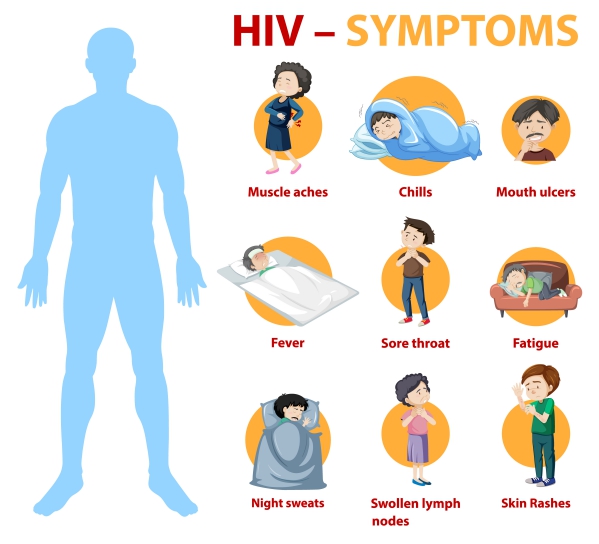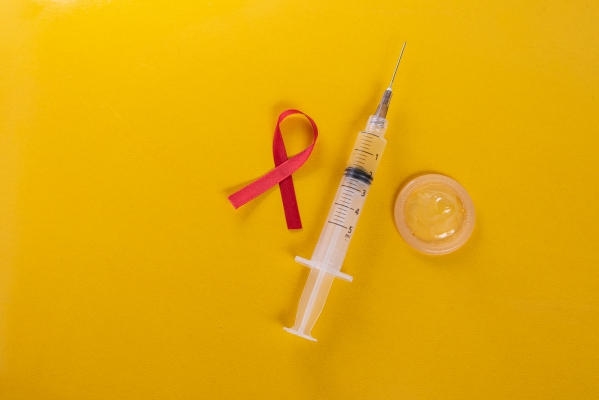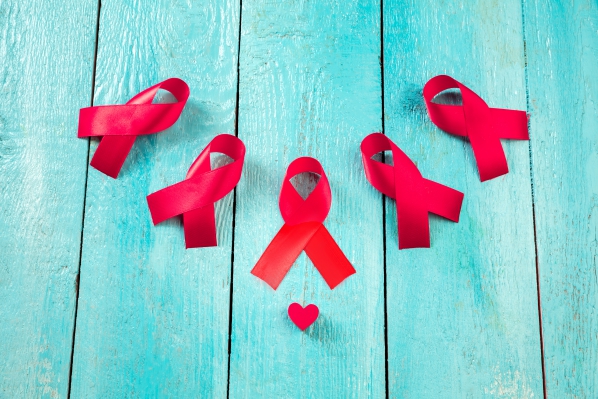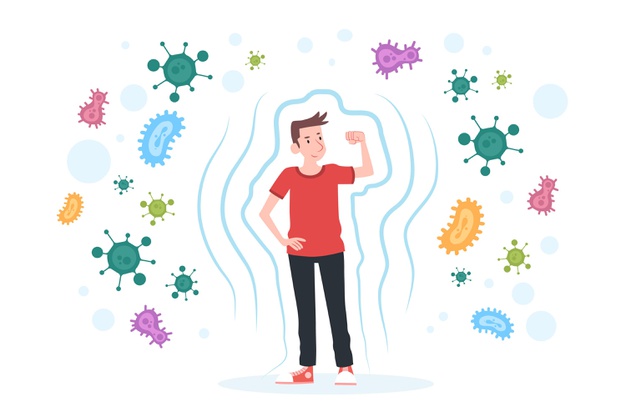What is HIV and AIDS?
Human immunodeficiency virus (HIV), as the name suggests, is a virus that affects the way your immune system functions. Your immune system is responsible for fighting against infections and diseases. HIV is a virus that travels through the blood and that is typically transmitted during sexual intercourse, sharing of needles among drug users and from mother to baby during childbirth or breastfeeding. Acquired immunodeficiency syndrome (AIDS) is when your immune system has decreased to a point that you get recurrent infections. It occurs if HIV is left untreated.
Studies have shown that HIV may originate from chimpanzees and may have jumped into humans in the late 1800s. According to the Joint United Nations Programme on HIV/AIDS (UNAIDS), in 2018 there were approximately 37.9 million people who had HIV around the world with about 1.7 million who were newly infected. Around 770,000 of infected people died of AIDS in that same year.
Till date, there is no cure for HIV or AIDS. However, once you are diagnosed with HIV, it is highly recommended to start certain medications as it can positively slow down its progression.
Causes of HIV and AIDS
HIV is caused by a virus which can be transmitted through various ways including:
- Unprotected sexual intercourse: Vaginal, anal or oral sex can all lead to the spread of the virus. This is due to the contact with body secretions and blood.
- Sharing of needles: Intravenous drugs users can get or transmit HIV through sharing of infected needles with other drug abusers.
- Blood transfusions: Despite being rare nowadays, HIV may be transmitted through blood transfusions in cases where the blood is not screened.
- Pregnancy, childbirth and breastfeeding: Mother to child transmissions are possible during pregnancy, childbirth or breastfeeding. Mothers with HIV should not be encouraged to breastfeed their babies.

Despite being transmissible through blood, it cannot spread through vectors such as mosquitoes or other insect bites. It is not transmitted by shaking hands or hugging someone with the infection. Unlike many other viruses, it cannot be spread through air either.
The virus affects the immune system of the person infected by attacking his/her CD4 T cells which play a role in fighting infections and diseases. With time, your number of CD4 T cells will decrease and make you more prone to getting infections that would normally have been handled easily by your body. AIDS is defined as having a CD4 T cell count below 200 and having an AIDS-defining complication.
Risk factors
Since HIV is transmitted through blood and body secretions, the following factors can put you more at risk of having HIV:
- Having unprotected sex: The use of condoms can reduce the risk of HIV transmission.
- Having multiple sexual partners: This can significantly increase your risk of getting as well as spreading HIV.
- Being an intravenous drug abuser: Spread of HIV can be done through sharing of infected needles and syringes.
- Having another sexually transmitted infection: Some sexually transmitted infections cause the formation of sores in the genital area which can be a port of entry for HIV during sexual contact.
- Being a healthcare worker: Accidental needle-stick injuries with known HIV-positive blood can cause the contamination of the healthcare worker.
- Had a blood transfusion prior to 1985 in the United States: Screening for HIV was not done for blood products prior to transfusion at that time.

Signs and symptoms of HIV and AIDS
There are 3 stages of HIV infection and these are:
- Stage 1 – Acute HIV infection: During this stage, the infected person is highly contagious. Some people may present with flu like symptoms such as fever, malaise, generalised skin rash, headache, muscular pain, sore throat, swollen lymph nodes in the neck, diarrhoea, cough or weight loss. Others may not have any symptoms at all. Only blood tests can confirm the presence of HIV at this stage.
- Stage 2 – Chronic HIV infection: This stage, also known as the asymptomatic or clinically latent stage, is when the patient does not have any symptoms at all and it lasts for long (a decade or longer). The virus is still present and active but progresses very slowly. However, the infected individual can still transmit the infection during this phase. At the end of this stage, the viral load, which is the amount of virus in your blood, increases while the CD4 T cell count decreases significantly. If treatment is not initiated, the CD4 T cell count will continue to decrease progressing into stage 3.
- Stage 3 –AIDS: During this stage, your immune system is at its weakest point making you more prone to a variety of severe illnesses also known as opportunistic infections. It is diagnosed when the CD4 T cell count falls below 200 cells/mm or if there is the presence of particular opportunistic infections. If left untreated, the survival time at this point is of about 3 years. People in the AIDS stage typically present with fever, unexplained fatigue, swollen lymph nodes, severe weight loss, oral yeast infection, shingles and chronic diarrhoea.


Making a diagnosis
There are several tests that can be used to diagnose HIV namely:
- Antibody/Antigen tests: In this test, the levels of antibodies and antigen is calculated. Antibodies are protein that are produced by your immune system to fight infections. Antigens are parts of the virus against which antibodies will act. Antibodies only tests can also be performed.
- Nucleic acid tests (NATs): This tests is used to detect the virus load in your bloodstream. This test is usually positive in the early stages of infection.
It is very important for you to ask for a blood test if you think you might have been exposed to the virus through unprotected sex, needles or blood products.
Once diagnosed with HIV, several other tests will be needed at different time intervals in order to tract and monitor the progress of the disease. These tests include:

- CD4 T cell count: These are the cells that are destroyed by the virus. As this levels goes down, you are more likely to progress to AIDS and develop recurrent infections.
- Viral load: It is used to measure the actual amount of virus in your blood. This can be used to monitor the effectiveness of the HIV medications once treatment is initiated.
Treatment of HIV/AIDS
Till date, there is no cure for HIV/AIDS. This is due to the specific characteristic of the virus to mutate. However, there are medications available known as antiretroviral therapy which can slow down the progress of the infection as well as preventing its complications. Once the diagnosis is made, it is very important to start antiretroviral therapy as soon as possible.
Antiretroviral therapy works as a combination of different medications. It is efficient in decreasing the viral load, hence the use of the latter to monitor the response to the treatment. With time, CD4 T cell counts begin to rise, preventing the appearance of opportunistic infections. Usually, 3 drugs among the following classes are used:
- Non-nucleoside reverse tran ase inhibitors (NNRTIs): for example efavirenz, nevirapine, etravirine, rilpivirine
- Nucleoside and nucleotide reverse tran ase inhibitors (NRTIs): for example Tenofovir, abacavir, zidovudine, lamivudine
- Protease inhibitors: such as fosamprenavir, atazanavir, lopinavir
 Integrase inhibitors: for example raltegravir, dolutegravir
Integrase inhibitors: for example raltegravir, dolutegravir- Fusion inhibitors: such as enfuvirtide
Your doctor knows best which combination to start with and it is advised that you follow carefully the instructions given to you.
The goals of management in HIV infection are to:
- Maintain physical and mental health
- Increase survival rates
- Improve the quality of life
- Restore and improve immunity
- Avoid further transmission
Psychological support may also be provided due to the distress caused by the illness and the stigma attached to it.
Some side effects caused by the treatment of HIV include nausea, vomiting, liver damage, weakened bones, abnormal blood sugar and cholesterol levels and emotional problems.
Complications
As mentioned earlier, untreated HIV can lead to AIDS due to the significant decrease in CD4 T cell count. This predisposes you to opportunistic infections such as:
- Pneumonia caused by Pneumocystis jiroveci which is a fungus that can cause severe infection.
- Oral candidiasis or thrush characterized by a thick white layer coating your mouth, tongue or genitals.
- Tuberculosis which is the most common cause of death among AIDS patients
- Meningitis which is an inflammation of the membranes around your brain and spinal cord. This is most commonly due to Cryptococcus which is a fungus.
- Toxoplasmosis which is a parasite that can affect your brain or heart.
- Cancer such as lymphoma or Kaposi’s sarcoma.

Prevention of HIV/AIDS
Some preventive measures for HIV/AIDS are as follows:
- Use of condoms every time you have sex
- Not having multiple sexual partners
- Not injecting drugs or not sharing needles if you do
- If you think you are at high risk of being exposed to HIV, ask whether pre-exposure prophylaxis is suitable for you
- If you think you have been exposed to HIV within the last 3 days, ask immediately for post-exposure prophylaxis as it can prevent HIV
- Get tested and treated for other sexually transmitted diseases
- Take your antiretroviral therapy as prescribed to prevent progression to AIDS
- Once progressed to AIDS, an antibiotic such as Bactrim should be taken to prevent opportunistic infections.
Prognosis
If left untreated, the prognosis for HIV is poor with around 90% of deaths. Once the AIDS stage is reached and untreated, the survival time of about 2 years. If antiretroviral therapy and prophylaxis for opportunistic infections are taken appropriately, survival is significantly improved and the risk of infections is decreased.

Source:
Parveen, K. and Michael, C., 2017. Kumar & Clark's Clinical Medicine. 9th ed. The Netherlands: ELSEVIER.
Gilroy, S., 2020. HIV Infection and AIDS.
Centers for Disease Control and Prevention. 2020. HIV.







